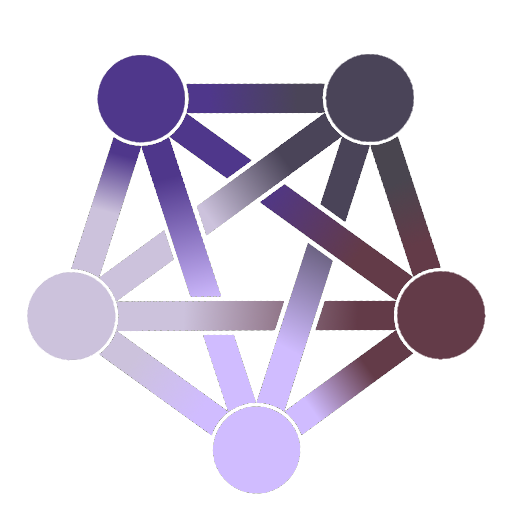- cross-posted to:
- technology@lemmy.world
- cross-posted to:
- technology@lemmy.world
These companies are constantly mislabeling these networks every generation. They are addicted to advertising bullshit.
See AT&T labeling HSPA as “4Ge” and enhanced LTE as “5Ge”.
Neither of which is actually 4G or 5G.
deleted by creator
I imagine an argument in my head like this:
Comcast: 10G doesn’t confuse customers. Obviously we are saying they can buy up to 10 Gbps on our network.Somebody: Do you call your 1 Gbps plans Xfinity 1G?
Comcast: No
Somebody: Why not call it that instead of Xfinity Gigabit?
Comcast: Because customers might think cell plans at 5G are bett…oohhhhh you almost got us!
I know it didn’t go like that but it would have been a good laugh.
Left guy: Eehhh? 👉👉
Right guy: Aahhh? 👈👈
This shit started with 3g. None of the carriers were even close to supporting 3g, which was designed to support 100mbps.
Tmo and vzw had a modest improvement from 2g even though it was still slow as shit but AT&T simple did nothing and started calling theirs 3g.
Doesn’t it stand for generation? Like 3rd generation and 5th generation? This is referencing a wifi router is it not?
So sort of: the 3g is part of a standard for data rates, but the difficulty, comes in that networks are not homogeneous. Similarly to how you might be familiar with 5Ghz and 2.4Ghz WiFi signals. As a general rule of thumb the higher the frequency the more data you can send but with more attenuation so the signal can be blocked more easily and cannot travel as far, whereas the inverse is true for lower frequencies. So while the generations did make some changes in terms of protocols— it also came with higher frequency emitters which can theoretically carry more data. Other changes include MIMO antennas which do beam forming to make more of the energy go in the direction of a user using constructive and destructive interference from an array of antennas to accomplish this. However marketing people are always very eager to adopt technical terms and inflate them into oblivion. However some of this can be attributed to honest misunderstanding within a company.
generation for cellular data, not wifi. I liked this video that explains it
One hundred millibits per second? That means it takes ten whole seconds to send a single bit! That’s outrageous.
Hey, that is still considered “high-speed” here in Germany!
When I sold Century Link that would have cost 59 dollars a month plus 30 dollars in hidden fees.
4G LTE was the point of no return. It was supposed to mean “it’s not 4G yet but we have an upgrade plan to get there”, but when they finally did, marketing found out that to the average person, going from 4G LTE to 4G sounded like a downgrade, so they rebranded it to 5G.
What kills me is it’s the same with CPUs. A 5nm chip is larger than 5nm.
I thought it meant the transistor size.
It doesn’t really mean anything anymore. The transistors are not 5nm either. It’s just marketing.
Quoth Wikipedia:
The term “5 nm” has no relation to any actual physical feature (such as gate length, metal pitch or gate pitch) of the transistors being 5 nanometers in size. According to the projections contained in the 2021 update of the International Roadmap for Devices and Systems published by IEEE Standards Association Industry Connection, a “5 nm node is expected to have a contacted gate pitch of 51 nanometers and a tightest metal pitch of 30 nanometers”. However, in real world commercial practice, “5 nm” is used primarily as a marketing term by individual microchip manufacturers to refer to a new, improved generation of silicon semiconductor chips in terms of increased transistor density (i.e. a higher degree of miniaturization), increased speed and reduced power consumption compared to the previous 7 nm process.
I’m surprised this is not enough for a lawsuit to happen
Who the fuck cares about 10Gbit/s? With data caps, there is nothing I am downloading on a mobile device that is perceptibly faster than downloading it at 1/1000 of that speed
Imagine having data caps in 2024
And this a problem only in the monopolistic culture of the US. I can’t name a single EU State with broadband data cap.
Uhh… Germany would like to have a word
Most carriers do offer some uncapped plan, I think, but it’s expensive and not the default
I am talking about landline providers.
Ah. Well the first comment in this chain talked about mobile devices, so I was assuming we were talking about mobile data plans
Portugal.
Imagine it? Living it.
I can get rid of mine…
For an extra $50/month
I have 8/8 gbps with no caps… quantum fiber (lumen, CenturyLink). The speed is amazing.
What’s “quantum” about it?
Sometimes works, sometimes doesn’t, but you only know when you check and go to use it.
Its cost
$185? It’s not that expensive for 8/8 IMO… 1gig cable is like $300
Yeah, that’s not bad. I pay $70 for just 1/1, so…
That’s the name of the company. https://www.quantumfiber.com/ It’s owned/operated by Lumen/Centurylink.
fibers carry light particles I guess
The electrons.
Holy shit I thought data caps died in the mid 2000s. Why is the US allowing ISPs get away with this nonsense?
Because we apparently love A-B testing our government.
Money. The answer is always money.
This isn’t about 10gbps which is the point. It’s also not really about mobile. The packages they are offering are mostly cable connections (with a side of mobile).
The point is for dense areas, so theres enough bandwidth to share
No one needs 100Mbps on their mobile data 99% of the time.
10th generation, not 10gbps download speed.
Jesus. I always hated those ads, but even the industry’s own “self-regulatory” system thought 10G was bullshit.
Fine I’ll stop misleading people about 10g.
In other news have you heard about our 11g network?
Cool. Now add the modem I just bought 6 months ago, that supports the speeds I pay for and you had on your approved list before your recent updates back to the approved list.
When contacted by Ars, a Comcast spokesperson said, “We disagree with the decision but are pleased that we have confirmed our continued use of 10G in advertising.”
So they basically said “lol no”
“Zillion G”
What’s wild is I assumed that they had created a fake “5G” like name to fool people into thinking it was a 10Gbps network when it’s exactly the opposite.
Weird.
Kind of. It is the aspiration for 10Gb connections. They have been using the term well before those were a possibility even in a lab.
Yeah but they’re using 10G like “5G” is the argument being made rather than saying it’s a 10Gbps network
It’s just that I expected them to lie differently
…the company “makes available 10Gbps of Internet speed to 98 percent of its subscribers upon request.”
…upon request? Forget aspirations, this sentence is breaking my brain
This is the best summary I could come up with:
Comcast has reluctantly agreed to discontinue its “Xfinity 10G Network” brand name after losing an appeal of a ruling that found the marketing term was misleading.
Verizon and T-Mobile both challenged Comcast’s advertising of 10G, a term used by cable companies since it was unveiled in January 2019 by industry lobby group NCTA-The Internet & Television Association.
The challenges lodged against Comcast marketing were filed with the advertising industry’s self-regulatory system run by BBB National Programs.
Comcast said it disagrees with “the recommendation to discontinue the brand name” because the company “makes available 10Gbps of Internet speed to 98 percent of its subscribers upon request.”
But those 10Gbps speeds aren’t available in Comcast’s typical service plans and require a fiber-to-the-home connection instead of a standard cable installation.
NCTA claimed that “10G can change lives” and that the “10G platform will facilitate the next great technological advancements in the coming decades, ensuring fast, reliable, and safe networks continue to power the American economy.”
The original article contains 756 words, the summary contains 162 words. Saved 79%. I’m a bot and I’m open source!
Remember, qualquack should oligobble your balls















